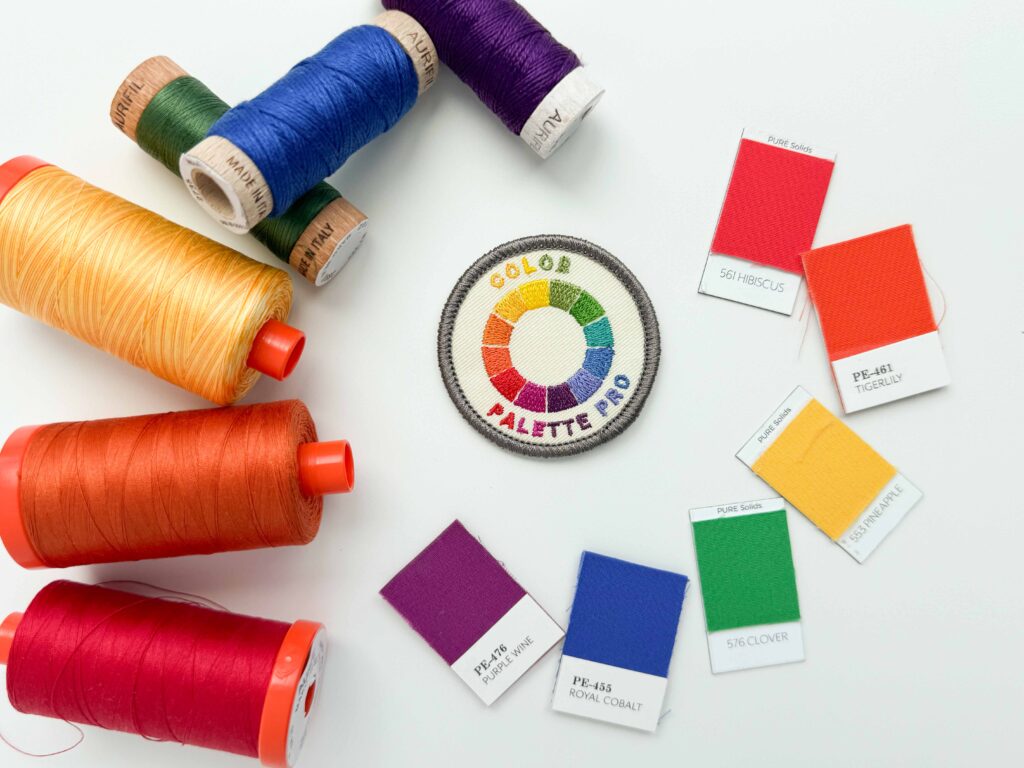Ever finished a quilt top, stepped back… and felt kind of “meh” about it? Like the piecing is solid, your stitches are snatched, but something’s just off?
Friend, it might be time to befriend your color wheel.
Understanding the why behind color combos can take your quilt projects from fine to “OMG did you make that!?” Here’s how learning just a few simple color theory concepts can totally change the way you plan, piece, and pull fabric.

🎨 Why Color Theory Matters (Even If You’re a “Go with Your Gut” Quilter)
You don’t need an art degree to get better at using color. Learning a little color theory gives you:
- Confidence in your fabric pulls
- Direction when a palette feels stuck or muddy
- Creativity to try bold combinations you wouldn’t normally reach for
And it’s not about limiting your instincts—it’s about giving your gut a roadmap.
🧭 5 Color Theory Concepts Every Quilter Should Know
These aren’t boring textbook definitions. These are scout-tested, quilt-approved tools you can start using right away.
1. Hue, Value, and Saturation
These are the building blocks of color. Hue = the basic color. Value = how light or dark it is. Saturation = how intense it is. Play with these, and you can turn ANY color into a whole vibe.
2. Monochromatic Color Schemes
Using one color in different shades. Perfect for minimalists, stashbusters, or anyone craving peace and calm in their patchwork.
3. Analogous Color Schemes
Colors that are next-door neighbors on the color wheel (like green, teal, and blue). They blend beautifully and give you built-in harmony.
4. Complementary Color Schemes
Opposites attract. These combos (like red + green or purple + yellow) create contrast and energy. Bold and punchy!
5. Split Complementary + Triadic Palettes
Want contrast and balance? Split complementary and triadic palettes let you combine three colors with plenty of room for fun and nuance.
Real Talk: You Don’t Need Fancy Tools
You can start playing with color right now using:
- Fabric scraps or solids from your stash
- Paint chips (yes, the ones from the hardware store)
- Thread spools, embroidery floss, or even
- A digital palette tool like Quilt Ink
Take the Quiz: Are You a Color Palette Pro?
Think you’ve got a good eye for color? Or maybe you’re still matching thread with your fingers crossed?
Take our brand new, totally scouty quiz and find out! It’s quick, fun, and packed with color theory tidbits you can use on your next quilt.
Take the Quiz Now
Final Scout Notes
Color theory doesn’t have to be intimidating. It’s not a rulebook—it’s a toolkit. Start small, explore with curiosity, and you’ll start seeing your projects in a whole new light.
Feeling inspired? July’s badge of the month is Color Palette Pro, and we’re diving deep into color combos with a National Parks–inspired challenge exclusively for Quilt Scouts members. 🌲🎨
👉 Want in? Join Quilt Scouts and try it free for 7 days.
Earn your badge, unlock the full color challenge, and gain a whole community of color-curious quilters.
+ show Comments
- Hide Comments
add a comment